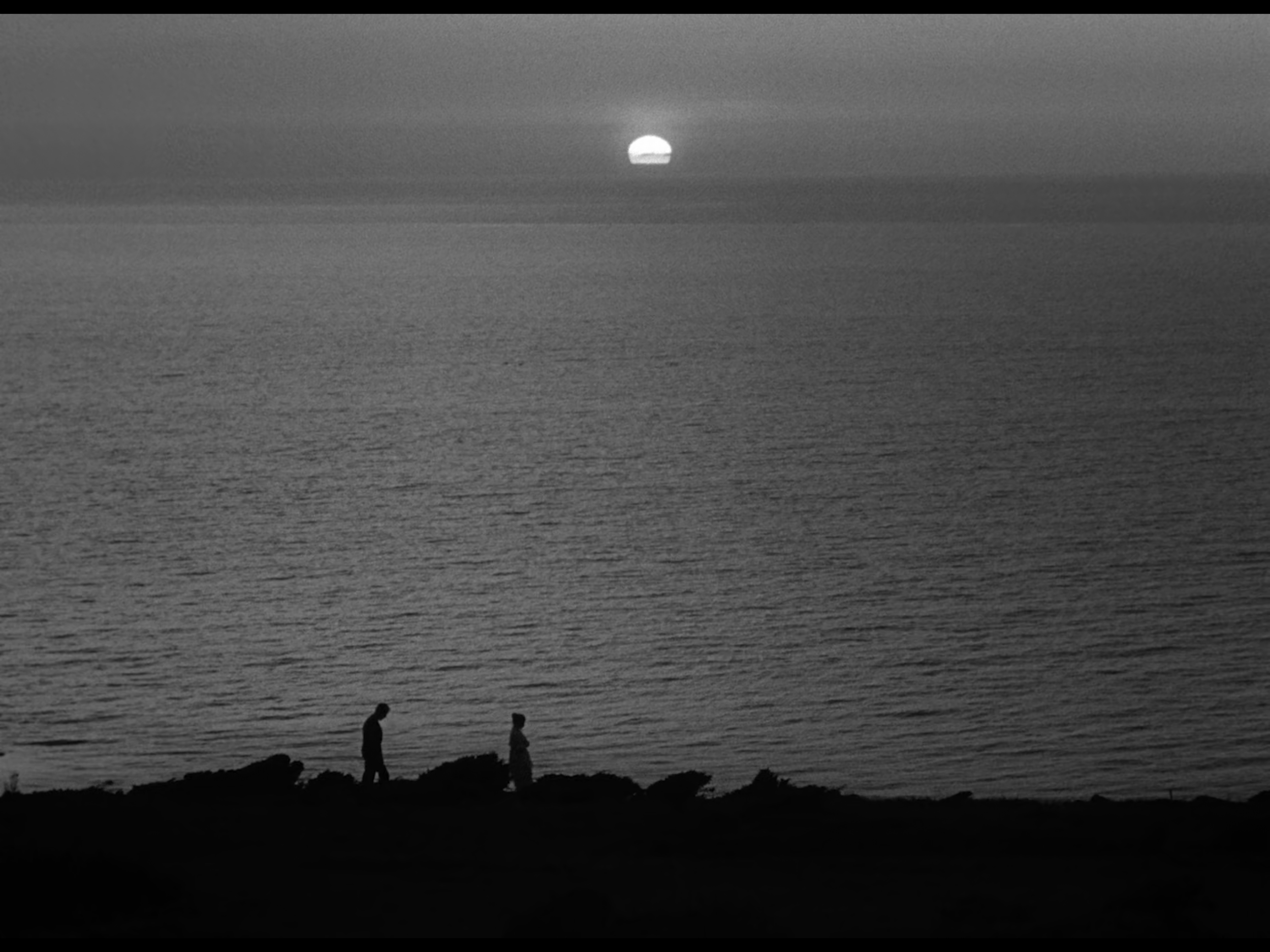Hour of the Wolf (1968)
In Ingmar Bergman's "Hour of the Wolf," we witness an artist's descent into madness, or perhaps something far more evil than that. Like many of Bergman's finest works, the line between reality and nightmare becomes exquisitely blurred, creating one of cinema's best horror art films.
The film opens with an audacious breaking of the fourth wall: Liv Ullmann directly addressing the camera, speaking of her missing husband Johan (Max von Sydow). Even before this, Bergman's voice is heard during the opening titles, calling out setup instructions and "action," immediately shattering any illusion that this is anything but a constructed piece of cinema. Yet in the same breath, he insists the story is based on a real diary. It's a masterclass in unreliable narration.
Sven Nykvist's cinematography builds upon the visual language he and Bergman established in "Persona" just two years prior. Like its predecessor, "Hour of the Wolf" employs stark B&W photography that turns human faces into landscapes of psychological torment. The extreme close-ups that proved so revelatory in "Persona" return here, but now they're often lit from the side, creating harsh shadows that suggest the characters' inner darkness. In both films, Nykvist's deep-focus compositions and unflinching camera serve as a surgical tool, dissecting the human psyche with clinical precision. The key difference is in their execution - while "Persona" used brightness to expose truth, "Hour of the Wolf" uses similar techniques to explore the shadows where truth and hallucination become indistinguishable.
"You see what you want to see," says Lindhorst (Georg Rydeberg), and this becomes the film's haunting theme. Bergman forces us to question every supernatural occurrence, every bizarre encounter. Are the aristocratic creatures who torment Johan real, or manifestations of his artistic demons? The answer, I suspect, matters less than the question itself.
The film's obsession with time, manifested in Johan’s watch and the recurring ticking soundtrack, speaks to Bergman's own anxieties about mortality and artistic relevance. Made during a period when he was questioning his own creative direction, this film feels deeply personal. Johan's struggles with his art and personal demons mirror Bergman's own battles with his creative identity.
It's impossible to watch "Hour of the Wolf" without seeing its DNA in David Lynch's later works. The surreal dinner parties and mysterious aristocrats would find echoes in "Eraserhead" and "Blue Velvet," while the film's dream logic would become an influence for "Mulholland Drive." Both directors share an obsession with the thin membrane between reality and nightmare, and both understand how horror can emerge from the most mundane moments.
What makes "Hour of the Wolf" particularly fascinating is how it functions both as horror film and autobiography. Bergman isn't just telling a ghost story but exorcising his own demons on screen. The result is something unique in cinema: a horror film about the terror of artistic creation itself.
The "hour of the wolf,” the supposed time between night and dawn when most people die and most children are born, becomes a perfect metaphor for the artistic process itself: a time of both death and creation, of terror and possibility. In crafting this dark fairy tale, Bergman shows us how personal demons can be transformed into universal art.
Like all great Bergman films, "Hour of the Wolf" it demands to be deciphered, discussed, and revisited. It's a puzzle box of a film that reveals new layers with each viewing, proving that the best horror doesn't come from what we see, but from what we think we might have seen.
This film stands as one of Bergman's most daring experiments, a film that ventures into the darkness of the artistic soul and returns with something both terrifying and profound. It's a reminder that sometimes our greatest fears aren't external monsters, but the demons we carry within ourselves.











